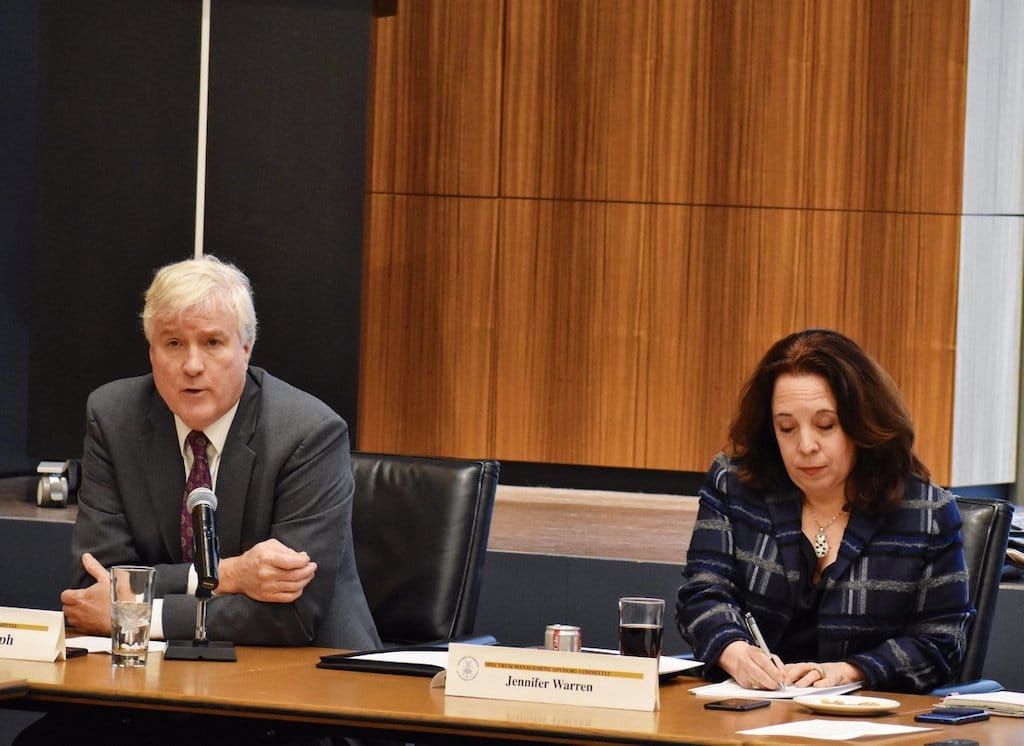NTIA Notice of Funding Opportunity on Infrastructure Bill Might Move to June
The timeline was provided by Associate Administrator Doug Kinkoph, although the agency plans to meet statutory deadlines.

WASHINGTON, February 18, 2022 – An official at the National Telecommunications and Information Administration said this week that the agency’s notice of funding opportunity for the Digital Equity Act programs of the recently enacted bipartisan infrastructure bill may be released in mid-June.
The agency said that it plans to meet its statutorily-required deadline to issue a notice of funding opportunity for the Broadband Equity, Access and Deployment Program and the Enabling Middle Mile Broadband Infrastructure Program, by May 16.
Doug Kinkoph, the associate administrator of the agency’s Office of Internet Connectivity and Growth, outlined the timeline while speaking on a panel about infrastructure bill spending Tuesday during the National Association of Regulatory Utilities Commissioners’ Winter Policy Summit.
Kinkoph also made note that the NTIA is currently coordinating with the Federal Communications Commission on a weekly basis, and that the agency will actively be utilizing input from individual states to develop plans for disbursing the bill’s funding.
On Wednesday during a hearing of the House Energy and Commerce Committee with the NTIA’s head Alan Davidson, Davidson said that he spoke with Federal Communications Commission Chairwoman Jessica Rosenworcel on his second day in the job. They have been in “constant communication since then,” he said.
Infrastructure, supply chain issues, and ‘Build Back Better’
At the NARUC event prior to the panel on which Kinkoph spoke, Secretary of Energy Jennifer Granholm spoke to NARUC’s audience virtually, championing President Joe Biden’s domestic agenda that includes the bipartisan infrastructure bill and components of the stalled Build Back Better Act.
Granholm highlighted the infrastructure bill’s investment in supply chain policy, particularly to address shortages of batteries, as one of its most important components at the moment amid ongoing supply chain woes.
She also emphasized the need for the government to be transparent in how it funds new builds provided for by the infrastructure bill, and encouraged any entities with intelligence on potential Russian cyberattack activities through the country’s continued offensive on Ukraine to communicate those concerns with the federal government.
Granholm offered her opinion that the president’s Build Back Better agenda will eventually be passed.
Still waiting for FCC broadband maps
“Having been at the FCC twice I feel honor-bound to apologize because the FCC has really screwed it up,” said Blair Levin, the former architect of the 2010 National Broadband Plan, and former chief of staff at the FCC during the Clinton administration.
“We’ve got to get going on this. But the FCC, at best, will have a map by this summer. There are a number of states that have done a much better job than the FCC of collecting data, and I think there are states that are way ahead of them. “Hopefully the FCC will be able to make up for a lot of lost time.”
Haren Rashes of ExteNet said independent companies and municipalities face challenges regarding broadband maps of their area, particularly when it comes to utility pole permits. Randy Clark, vice president of federal regulatory affairs at Lumen, said that he has promoted “the critical” role of state maps in his conversations with the FCC.
Municipalities and pole attachments
There are three different types of municipalities, said Rashes: 60 percent are considered “good”, 30 percent are difficult but “you can see a light at the end of the tunnel”, and 10 percent don’t care what the FCC says they should do.
This last group of cities have created their own way of doing it that ends in them charging the companies more than they should have.
Rick Cimerman, vice president of external and state affairs for the cable television and internet association NCTA, agreed with Rashes on the importance of access to telephone poles. He cited a story in which a co-op proposed an application processing rate for getting wires on poles that would take 14 years.
With utilities commissioners also attending panels throughout the summit, electric utilities and cooperatives were heralded as solution-providers where even the recent federal infrastructure programs may fail to provide for Americans.
In part, electric utilities and cooperatives’ involvement in the broadband sector is important because the electric sector attract more funding opportunities, panelists said.
Reporter T.J. York contributing to this article.
Correction (March 2, 2022): A prior version of this article incorrectly implied that the NTIA was delaying the notice of funding opportunity for the most substantial funding included in the bipartisan infrastructure legislation: The Broadband Equity, Access, and Deployment Program. Although the Digital Equity Act programs were also included in the infrastructure legislation, the law does not require their completion by May 16, 2022. The story has been corrected.








